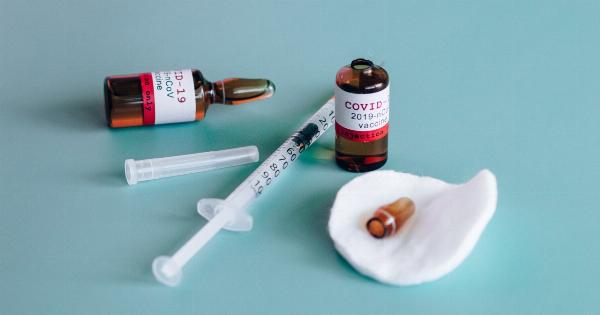Crohn’s disease, a chronic inflammatory bowel disease that affects millions of people worldwide, has always been a challenging illness to manage.
Though there are medications aimed at mitigating its symptoms, there is no known cure for the disease. However, recent research has led to the development of a new protein therapy that holds promise for treating Crohn’s disease.
What is Crohn’s Disease?
Crohn’s disease is an inflammatory bowel disease that causes inflammation in the lining of the digestive tract, which can lead to severe abdominal pain, diarrhea, fatigue, and malnutrition.
The inflammation can affect any part of the digestive tract, from the mouth to the anus. While the exact cause of Crohn’s disease is unknown, it is believed to be a combination of genetic and environmental factors.
The Current Treatment for Crohn’s Disease
While there are medications that can help reduce inflammation and alleviate some symptoms of Crohn’s disease, there is no cure. Current treatments range from immune suppressants like corticosteroids, immunomodulators, and biologics.
Biologics are drugs that target specific proteins in the immune system to reduce inflammation. But even with the availability of treatments, many patients still experience flares of the disease, which can interfere with their daily life and lead to complications such as surgery.
The search for a cure begs for more effective therapies with fewer side effects.
The New Protein Therapy
The new protein therapy for Crohn’s disease is aimed at blocking a molecule called IL-23 that has been linked to the inflammation that causes the disease.
The drug, known as Ustekinumab, was initially used to treat psoriasis and psoriatic arthritis and was approved by the US Food and Drug Administration (FDA) in 2009. A few years later, it was also found to be effective in treating Crohn’s disease and received FDA approval for this use in 2016.
Ustekinumab blocks IL-23, which in turn, lowers levels of IL-17 and other inflammatory cytokines that are present in the lining of the digestive tract in Crohn’s disease patients.
By doing this, it helps to suppress the inflammation that causes the symptoms of the disease.
Results of the Clinical Trials
The trials for Ustekinumab in Crohn’s disease have been promising so far.
A randomized, double-blind, placebo-controlled trial showed that patients treated with Ustekinumab experienced a significantly higher rate of clinical remission at week 8 than those who received a placebo, with 34.3% of patients in remission compared to 21.5% of patients receiving the placebo. Patients receiving Ustekinumab also had better quality of life and showed improvement in inflammation markers in the blood.
Another trial focused on the use of Ustekinumab as a maintenance drug to prevent disease relapse.
The trial found that patients given a dose of Ustekinumab every 12 weeks for 44 weeks had significantly fewer instances of relapse after six months than those given a placebo. The patients receiving Ustekinumab also showed fewer symptoms and better quality of life.
The Side Effects of the Therapy
Ustekinumab is generally well-tolerated, with side effects including upper respiratory tract infections, headache, and fatigue. There have also been rare cases of allergic reactions, but these are not common.
However, the potential for more serious complications, such as cancer and infections, still requires careful monitoring and observation. Patients are advised to be aware of the risks related to undergoing an immunosuppressive treatment and require regular monitoring to prevent unwanted occurrences.
The Future of Protein Therapy for Crohn’s Disease
The development of protein therapy as a treatment for Crohn’s disease has opened new doors and has proven to be a potentially effective way to reduce symptoms, improve quality of life, and prevent relapse.
It is hypothesized that continued research may produce an effective treatment, cure, or at least, the management of the disease for the long-term.
Currently, research into using gut bacteria, genetics, and new drug therapies is ongoing, opening the possibility of novel therapies for the illness.
These advances in the field could revolutionize the management of Crohn’s disease and improve the lives of millions of people struggling with the disease.
Conclusion
The development of Ustekinumab as a protein therapy for Crohn’s disease has shown exciting results, and it could be a viable alternative to traditional medications.
While it is not yet a cure, it has been shown to be both effective and well-tolerated. The possibility of using new protein therapies, such as Ustekinumab, to manage and perhaps eventually cure Crohn’s disease, is worth further exploration and research.































